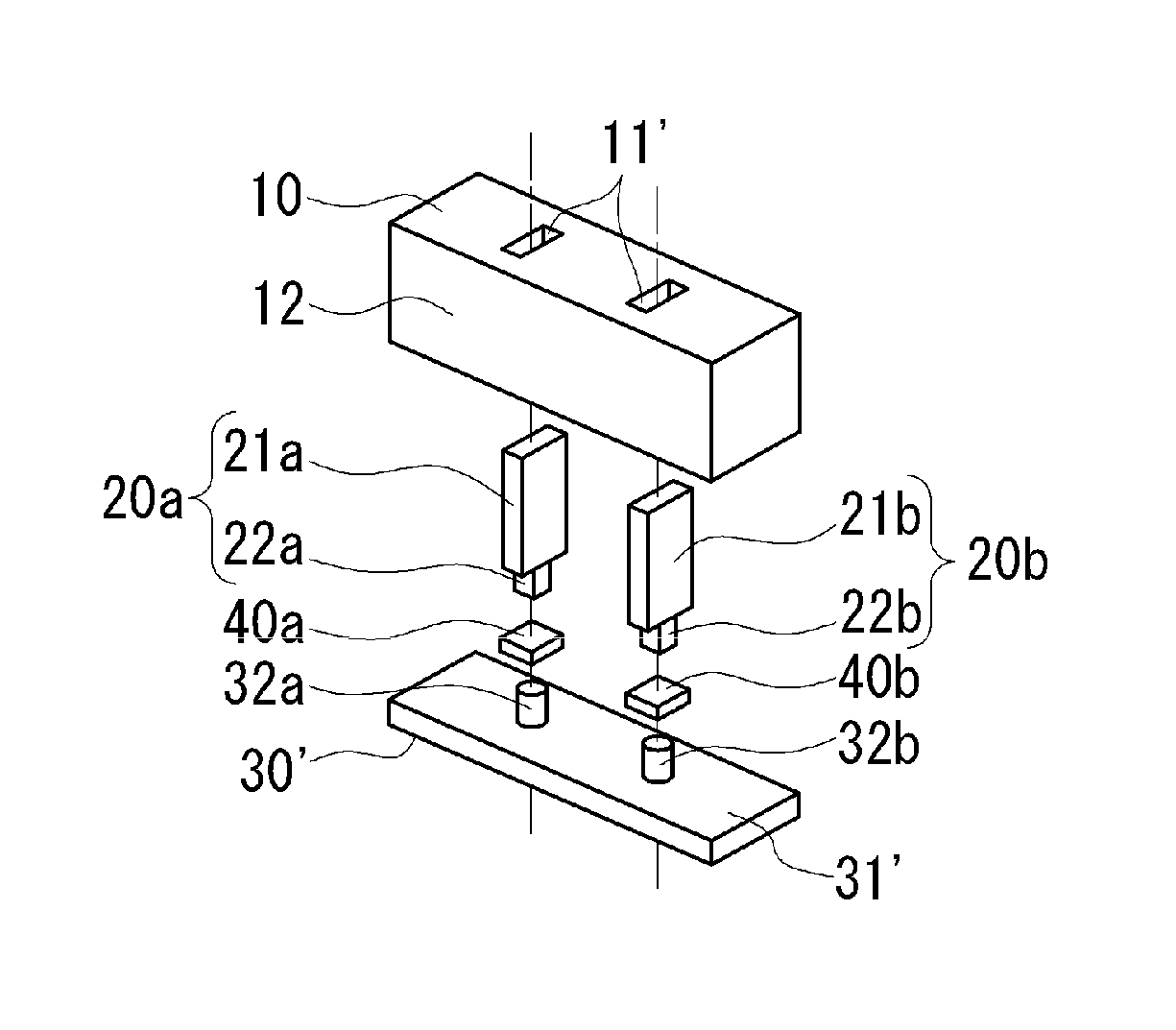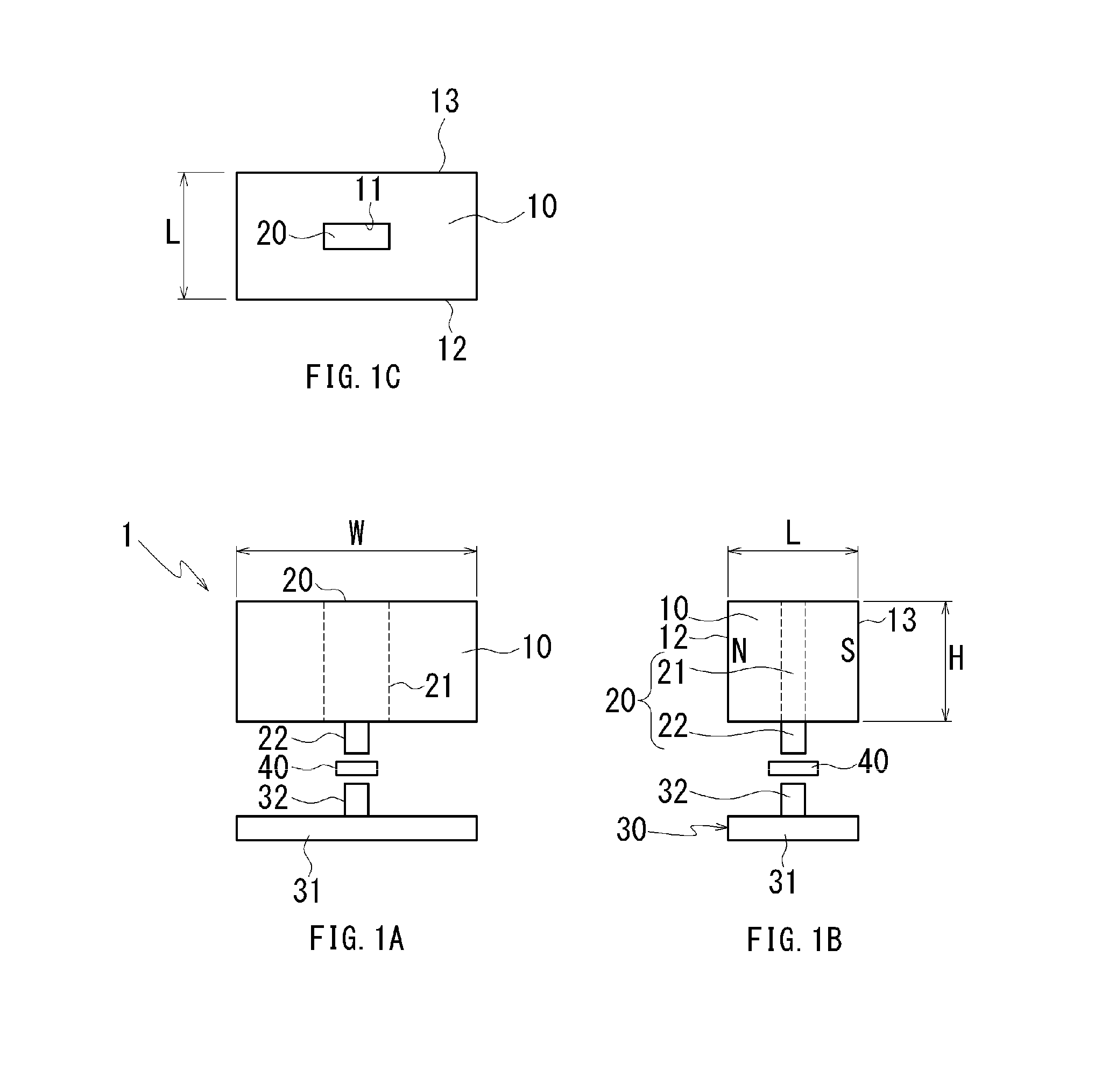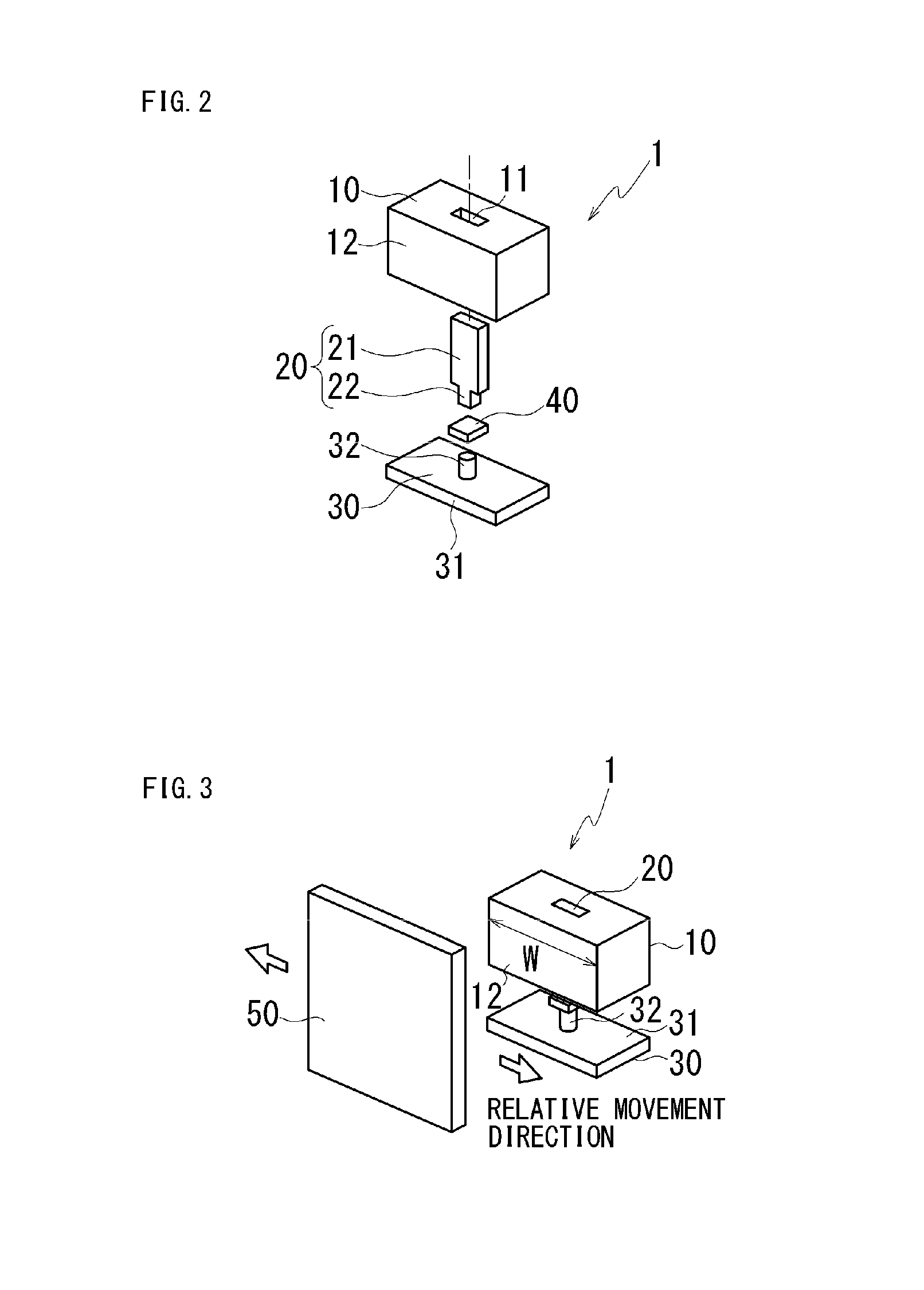Proximity sensor
a proximity sensor and magnetic field technology, applied in the field of magnetic proximity sensors, can solve the problems of loss of magnetic flux equilibrium, difficult to put this conventional proximity sensor into practice, and inability to meet the magnetic flux of two magnets in a region of magnetic detection elements. to achieve the effect of high accuracy
- Summary
- Abstract
- Description
- Claims
- Application Information
AI Technical Summary
Benefits of technology
Problems solved by technology
Method used
Image
Examples
first embodiment
[0026]FIG. 1A is a front view showing the configuration of a proximity sensor according to a first embodiment, FIG. 1B is a side view thereof, and FIG. 1C is a top view thereof. FIG. 2 is an exploded perspective view of the proximity sensor according to the first embodiment. A proximity sensor 1 comprises a permanent magnet (hereinafter, called a magnet) 10, a first yoke 20 held by the magnet 10, a hall IC 40 as a magnetic responsive element, and a second yoke 30. The magnet 10, as shown in FIG. 1B, has N pole and S pole at both ends in the right and left, and is formed in a rectangular parallelepiped having magnetic pole faces 12 and 13 each having a width W and a height H, and a length L. The first yoke 20 is held in a holding hole 11 of a rectangular traverse section that is formed in the center of the magnet 10 and penetrates from a top face to a bottom face thereof.
[0027]The first yoke 20 includes a fixed primary portion 21 that is formed in a plate shape and has the same heigh...
second embodiment
[0049]Next, a proximity sensor according to a second embodiment in the present invention will be explained.
[0050]FIG. 10A is a front view showing the configuration of a proximity sensor according to a second embodiment, FIG. 10B is a side view thereof, and FIG. 10C is a top view thereof. FIG. 11 is an exploded perspective view of the proximity sensor according to the second embodiment. A proximity sensor 1A in the second embodiment comprises a permanent magnet 10′, two first yokes 20a and 20b held by the magnet 10′, two hall IC 40a and 40b, and a second yoke 30′. The magnet 10′, in FIG. 10B, has N pole and S pole at both ends in the right and left, and is formed in a rectangular parallelepiped having magnetic pole faces 12′ and 13′ each having a width W and a height H, and a length L. Herein the width (W) dimension is longer than the magnet in the first embodiment. Holding holes 11′ each having a rectangular traverse section are provided at both sides of the magnet 10′ having the ce...
PUM
 Login to View More
Login to View More Abstract
Description
Claims
Application Information
 Login to View More
Login to View More - R&D
- Intellectual Property
- Life Sciences
- Materials
- Tech Scout
- Unparalleled Data Quality
- Higher Quality Content
- 60% Fewer Hallucinations
Browse by: Latest US Patents, China's latest patents, Technical Efficacy Thesaurus, Application Domain, Technology Topic, Popular Technical Reports.
© 2025 PatSnap. All rights reserved.Legal|Privacy policy|Modern Slavery Act Transparency Statement|Sitemap|About US| Contact US: help@patsnap.com



